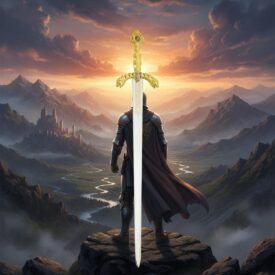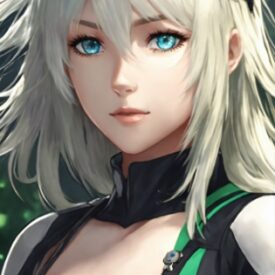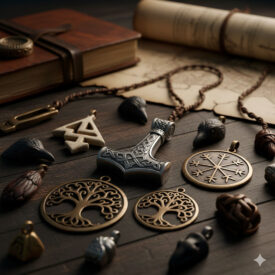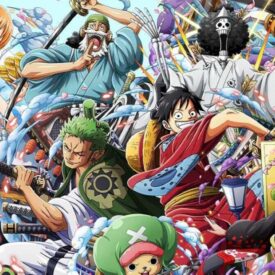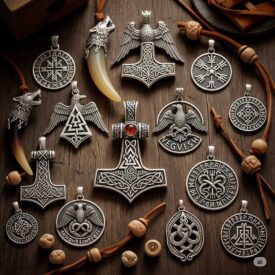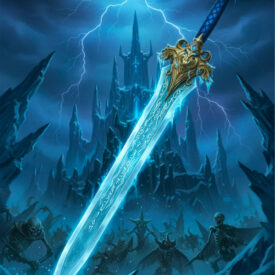We have heard that the sea holds names that are spoken like oaths: Gol D. Roger, Kaidou, Monkey D. Luffy. In One Piece, the characters are not mere pieces on a board: they are myth, ambition, and destiny. This article guides you through the intricate network of protagonists, antagonists, and mysterious figures, unraveling their power, their history, and how they influence the global plot.

Here you will learn to recognize what truly makes a character powerful in One Piece, how Haki and Devil Fruits relate to the narrative, and what the evolution of various key arcs and characters is. We also include a historical chronology that broadens the view of the weapons and symbols that appear throughout the fictional world, and a comparative table to understand attributes, affiliations, and abilities. Get ready for a journey that combines analysis, epic narrative, and historical context within Eiichiro Oda’s universe.
What defines a powerful character in One Piece?
In One Piece, the notion of power is multifaceted. Brute force is not enough: political influence, strategy, charisma, and historical context are fundamental pillars. Here I explain the key variables you should evaluate when measuring a character’s power:
- Haki: There are three fundamental types: Kenbunshoku (observation), Busoshoku (armament), and Haoshoku (conqueror). Mastery of Haki changes the impact of any confrontation.
- Devil Fruit: Grants exceptional abilities but with limitations and costs. Some fruits are devastating in combat; others provide strategic utility.
- Socio-political influences: Characters like Imu or the Gorosei dominate not by physical strength, but by institutional and secret control.
- Experience and legend: The legacy of Gol D. Roger or the fame of Whitebeard condition fear and alliances throughout the world.
- Unique weapons and techniques: Legendary swords, artifacts, and ancient techniques that transform the course of a battle.
Top: Most imposing characters and what makes them unique
Below, I unfurl a map of the characters who, due to their combination of abilities, influence, and narrative relevance, are often considered among the most powerful in One Piece.
| Character | Main Power | Haki/Fruit | Affiliation |
|---|---|---|---|
| Imu | Supreme authority and hidden control | Not publicly shown | World Government (secret) |
| Monkey D. Dragon | Command of the Revolutionary Army | High Haki (implied) | Revolutionary Army |
| Edward Newgate (Whitebeard) | Brute strength and mastery of the sea | Extremely powerful Haki | Former Emperor |
| Gol D. Roger | Charisma and mastery of the Grand Line | Legendary abilities | King of the Pirates (historical) |
| Dracule Mihawk | World’s greatest swordsman | Mastery of the art of the sword | Independent Swordsman |
| Kaidou | Nearly inhuman resilience | Powerful Zoan transformation | Four Emperors |
| Big Mom (Charlotte Linlin) | Physical potency and soul control (Homies) | Soul fruit (unique ability) | Four Emperors |
| Monkey D. Luffy | Versatility, indomitable will | Gomu Gomu no Mi (Hito Hito: Model Nika), advanced Haki | Straw Hat Pirates |
| Roronoa Zoro | Mastery of swords and santōryū technique | Haki, legendary swords | Straw Hat Pirates |
| Sabo | Fire manipulation and strategy | Mera Mera no Mi (fire) and Haki | Revolutionary Army |
This table summarizes known capabilities and narrative roles. Characters like Imu remain shrouded in mystery: their true power may transcend direct comparison. Others, like Luffy and Zoro, represent ascent through merit, training, and will.
Delving deeper: heroes, villains, and shadows
Luffy: of rubber and will
Monkey D. Luffy embodies the epic of will. His evolution from a young man with a straw hat to an aspiring Pirate King is a story of constant overcoming. After discovering the true nature of his fruit and mastering the three Haki, Luffy emerges not only as a formidable combatant, but as a symbol capable of disturbing the established world order.

What makes Luffy unique is not just his physical power; it’s his ability to turn allies, inspire revolts, and change the political balance of entire islands. In his confrontation with Kaidou, for example, he triumphed not only by strength but by a combination of strategy, resilience, and the ability to summon the loyalty of others.
Roronoa Zoro: the stillness of the blade
Zoro personifies the warrior’s path: discipline, sacrifice, and the obsession with surpassing Mihawk. His santōryū is not a trick; it is a philosophy of combat. With legendary swords like Enma and Wado Ichimonji, Zoro represents the forged side of power: pure techniques, relentless training, and a reckless loyalty that makes him a pillar of the group.

Sabo and the unseen revolution
Sabo is the strategic voice of the Revolutionary Army. His control of fire, coupled with his position as Chief of Staff, gives him a lethal mixture of combat capability and organizational leadership. In scenarios where politics and tactics matter, Sabo shines as brightly as the loudest warriors.

How to interpret power scales: narrative before numerical
One Piece is not a list of statistics. Power in the series functions as a narrative variable that Oda molds to generate dramatic consequences. Some guidelines for analyzing confrontations:
- Context of the conflict: geography, the morality of the faction, and motivations alter the outcome.
- Support and allies: a confrontation can be reversed with the arrival of reinforcements or the addition of complementary abilities.
- Strategy: several characters transform their physical inferiority into tactical advantage.
- Weapons and tools: a legendary sword or a homie can be decisive in key moments.
The political hierarchy: why Imu and the Gorosei change the game
Imu, a mystery shrouded in power, does not act like a typical fighter. Their strength lies in controlling information, executing decisions that mold nations, and the ability to erase figures (like Jaygarcia Saturn) without exposing themselves to frontal conflict. In One Piece, invisible power often governs more than visible power.
The Gorosei, for their part, represent the public faces of that control: institutions, decrees, and the monopoly of historical narrative. To understand the universe of characters, one must always read the tension between those who govern from the shadows and those who fight on deck.
Detailed comparison of abilities (expanded table)
| Character | Haki | Devil Fruit | Weapon/Technique | Narrative Strength |
|---|---|---|---|---|
| Monkey D. Luffy | Kenbun, Busoshoku, Haoshoku (advanced) | Gomu Gomu no Mi (Hito Hito Model: Nika) | Gear techniques and Haki combinations | Protagonist and catalyst for change |
| Roronoa Zoro | Busoshoku, Kenbun (solid) | — | Wado Ichimonji, Enma, Sandai Kitetsu, santōryū techniques | Rising swordsman, willpower |
| Kaidou | Intense Busoshoku | Mythical Zoan (transformation) | Hassaikai (kanabo) | Resilience and regional terror |
| Big Mom | Haki present | Unique fruit: control of homies (soul-related power) | Brute force and homies | Massive political and physical power |
| Sabo | Haki (demonstrated) | Mera Mera no Mi | Fire techniques and strategy | Revolutionary leadership |
Secondary characters who change battles and motivations
In One Piece, backstories transform secondary characters into drivers of change. Bell-mère, for example, did not fight with legendary swords, but her sacrifice molded Nami. Jinbe, Trafalgar Law, and figures like Emporio Ivankov sometimes provide the tactical key that decides a war. When analyzing characters, pay attention to who transforms whom.
Historical figures and their legacy in the present
Gol D. Roger and Edward Newgate continue to dominate the imagination due to their legacy: they inspired pirates, forged alliances, and their names opened doors (or closed destinies). The weight of a legend in One Piece is not symbolic: it generates bounties, political movements, and palpable social changes.
Figures of authority: from the sea to political anthems
The Navy, the Shichibukai (historical), and the World Government represent different ways of exerting control. While the Navy seeks order, the World Government exercises a monopoly on history and laws. Revolutionaries, on the contrary, attack that hegemony. The conflict between these powers defines a large part of the distribution.
Products and replicas inspired by characters
Replicas and collectible items translate the epic of the series into tangible objects that allow fans to connect with the story. From replica swords (clearly inspired by legendary swords) to figurines that recreate iconic poses, these objects narrate fragments of the myth.
How to read character development episode by episode
To understand a character’s evolution in One Piece, it’s helpful to apply a simple technique: tracking by arcs. Observe the actions that modify their point of no return, the allies they recruit, and the defeats that transform them. This reveals not only power growth but also changes in purpose.
- Emotional arc: what central decision defines them?
- Combat arc: what new technique or advantage do they reveal?
- Political arc: how does their relationship with institutions like the Navy or the World Government change?
Exemplary scenes for studying power and leadership
To learn from the series, revisit emblematic confrontations: the execution in Loguetown, the Marineford war, Doflamingo’s downfall, or the liberation of Wano. These scenes allow for comparison of leadership styles, sacrifice, and the interaction between Haki, Devil Fruits, and naval tactics.
Recommendations for critical study of the One Piece universe
If you want to delve deeper as an analyst or content creator:
- Document the evolution of Haki through major arcs.
- Relate character motivations to historical events in the lore (wars, governments, lineages).
- Use comparative tables to track changes in bounties and alliances (useful in articles and videos).
- Observe Oda’s narrative: characters that are symbols (freedom, authority, revenge) often have arcs that affect the entire world.
Notes on diversity and character design
The richness of One Piece lies in its heterogeneity: races, cultures, and visual designs that combine the fantastical with the human. Each character incorporates cultural and mythological references, from minks to giants, which enriches the reader’s experience and their ability to identify.
Recap of key ideas
Power in One Piece is a mix of ability, will, influence, and narrative. Characters like Imu change rules from the shadows; others, like Luffy, break the status quo from the front. Understanding the characters requires reading combat and politics at the same time.
Take what you’ve learned: when analyzing characters, combine comparative tables, review key arcs, and measure both their physical strength and the social repercussions of their actions. That is the authentic compass for evaluating the characters of One Piece.
